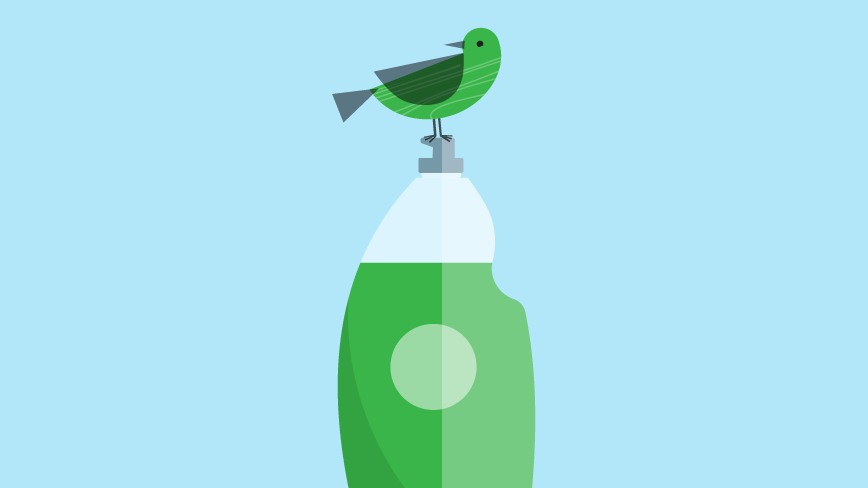Brands drive growth in consumer demand by adopting meaningful green marketing principles into production, packaging, and marketing messages.
As a great frog once said: “It’s not easy being green,” but it is increasingly necessary.
Among today’s enterprises of all sizes, customers expect green principles and practices. People not only want to buy environmentally friendly products, but they also want to support brands that boast strong Corporate Social Responsibility as an extension of their own values in “fighting the good fight” against waste and unsustainable resource consumption.
Because of this growing consumer demand, companies are seeking out ways to improve the eco-friendliness of their products and/or using packaging and production methods that lessen environmental impact. Brands able to reduce negative impact and clearly communicate their environmental values achieve a competitive advantage and strong growth. For example, multinational conglomerate Unilever reported that its sustainable brands grew 30% faster than the rest of its portfolio.
In this way, brands that add a “touch of green” to their business and marketing strategy can gain a leg up on competition while providing added value and benefit for their customers.
Eco-Friendly Brands Practice Sustainable Packaging and Decreased Production Waste
Companies wanting to improve their environmental image often start by proving themselves through their products. When thinking about environmentally friendly brands, people may consider the products themselves, including safe materials, natural ingredients, and overall contents. However, not all products are capable of being eco-friendly in this way, thus brands have to find alternate ways to “go green.”
Reducing waste in packaging, for instance, allows brands to feature their environmental benefits on the store shelf and in the home. Consumers increasingly request for brands to substitute harmful packaging, such as single-use Styrofoam products, for ecological and biodegradable materials. 70 percent of consumers state that sustainable packaging is a “top concern,” while 62 percent of consumers stated that they would harbor negative sentiments against any brand that didn’t make use of “the most environmentally friendly packaging available.”
Demand for sustainable packaging has also driven innovation, leading to ideas like edible, biodegradable six-pack rings developed by a small craft brewery in Florida that help keep plastic out of the ocean and harming sea life.
Reducing production waste can similarly drive growth behind-the-scenes while giving companies a solid environmental PR angle. As an example, PepsiCo saved $80 million in its quest to dramatically reduce water consumption by 26% across all manufacturing operations. All told, the company has generated more than $600 million in savings from sustainability initiatives over the past five years, which provides fuel for reinvestment while contributing to margin improvement.
Green Messages Just as Important as Green Practices
Broadcasting environmental values has become just as important to brands as the efforts themselves. Knowing the increasing importance this message has to consumers, brands must make sure they are getting the word out there. Many marketers make this message ring by touting their eco-friendly efforts right on the label, some incorporate as part of their overall brand voice, and others take to their owned properties or paid advertisements to plug their dedication and contribution to making our world a better place.
As an example, P&G’s Dawn dish soap has been making positive impact on the planet by literally helping clean it up. Environmental groups like the International Bird Rescue Research Center noticed decades ago how Dawn was the most effective detergent for removing oil and other residues from contaminated animals. As a result, Dawn began to communicate on bottles and in commercials that “Dawn Helps Save Wildlife,” most notably in the wake of the Deepwater Horizon oil spill in 2010. And though Dawn is among some of the more expensive conventional dishwashing liquids, their “Dawn Saves Wildlife” campaigns on broadcast TV, YouTube, print ads, and the company website helped lift sales against cheaper competitors while bringing in $3.37 on the dollar for ROI.
The important thing to consumers is that they grasp in concrete terms what environmental benefits a product actually provides, whether through the product itself, a more sustainable production process, philanthropic donations, or a combination. When consumers understand how spending their dollars benefits the planet, companies can reap the benefits of improved brand perception, increased market share, and boosted sales.

